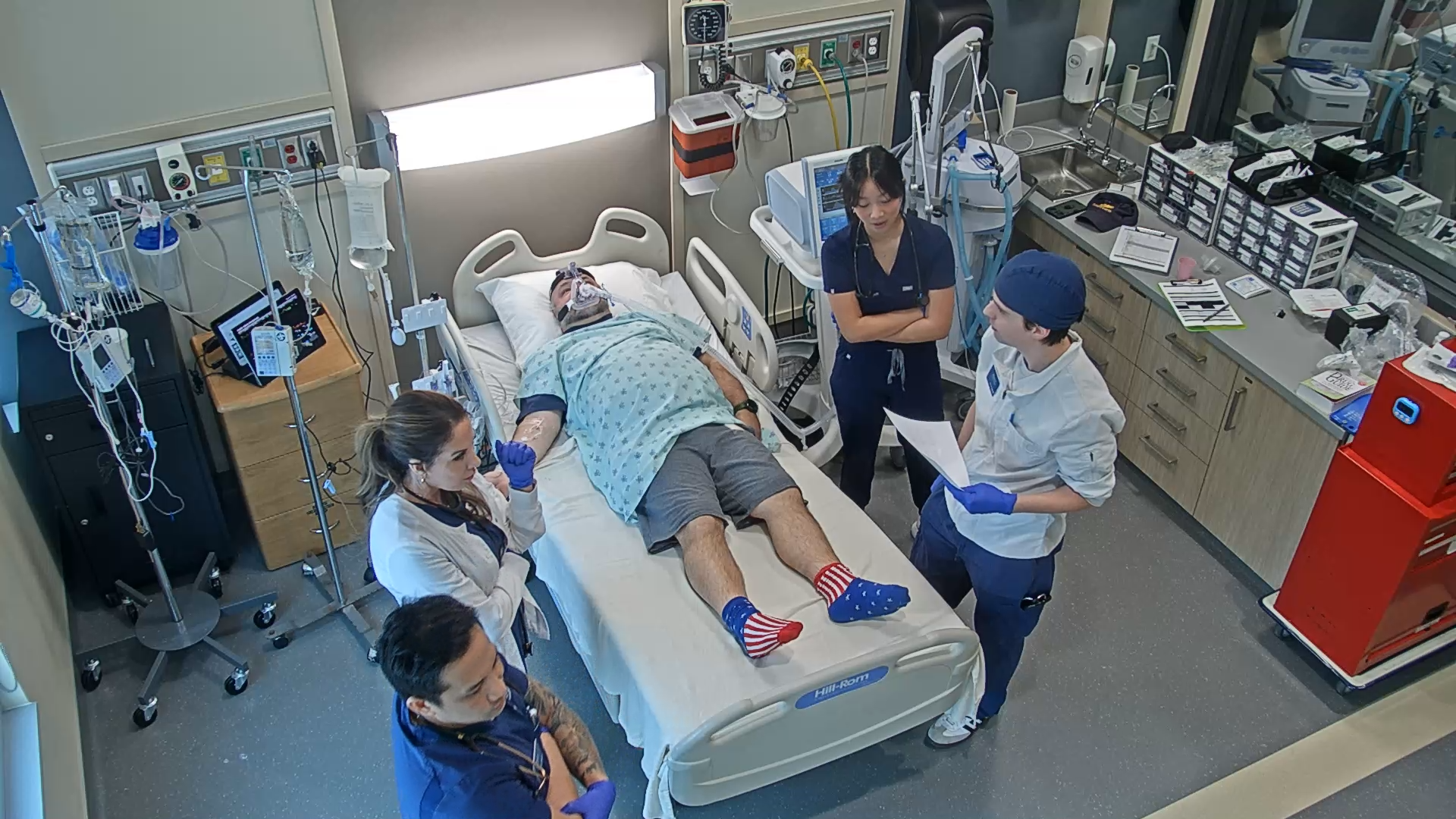Nursing and Respiratory Therapy Programs Learn Through Simulation

In a real-life emergency, there is no time for mistakes. Preparing students for the real world is critical to ensuring our communities receive the highest level of care. Kalamazoo Valley recently brought two programs together, respiratory and nursing, to prepare students for real-life medical emergencies.
A team of six nursing students and two respiratory therapy students took part in a full-day, hands-on training. The students worked together on two critical care scenarios where they had to stabilize a patient's condition, manage the airway and perform ventilator management.
According to Susan Pearson, program director for the respiratory care program, multidisciplinary simulations provide a learning experience where students can practice problem-solving and decision-making in a safe, supportive environment. They allow participants to work through challenges like troubleshooting equipment and calculating medication doses without real-world risks.
"These simulations not only build confidence but also reinforce the importance of teamwork across different healthcare roles," Pearson said. "By improving collaboration and critical thinking, they have been shown to reduce mistakes in real patient care, ultimately leading to better health outcomes."
Respiratory care student Faye Scott-Farnsworth said this simulation was a great opportunity to learn in a hands-on way.
"Through the simulation, I learned more about the nursing side as well as being able to teach a little about what respiratory therapists do," Scott-Farnsworth said. "Healthcare workers constantly are thrown into situations with each other and have to work together to best treat the patient and that's exactly what this simulation did."
The simulation day was developed and led by Paul Rigby, nursing and EMT clinician. Rigby worked closely with Nicole Pattison, a nursing clinician, Jill LaPenna, nursing faculty instructor, and Pearson.
"I liked that the simulation scenario was directly tied into what we had just learned," said nursing student Melissa Rios. "I liked that the scenario was evolving, so as we solved one problem another one would arise which kept us thinking about not just the current situation but looking at the bigger picture as well."
The student participants were divided into two teams. Each team took turns actively participating in a scenario while the other team observed. After each 30-minute simulation, all students gathered for a debriefing session. They reflected on what they learned, discussed different patient care strategies and received feedback from the simulation instructors and their peers.
Pearson helped design the respiratory components of the simulations.
"Watching the students interact brought tears to my eyes. Seeing them work together, teach each other and gain a better understanding of their roles was incredible," Pearson said.
LaPenna also found the experience inspiring.
"It was incredible to witness not only teamwork among the instructors but also collaboration between students from different disciplines," LaPenna said. "Seeing them learn from both the simulation and each other was truly energizing. This experience reaffirmed the importance of simulation training in healthcare education."


